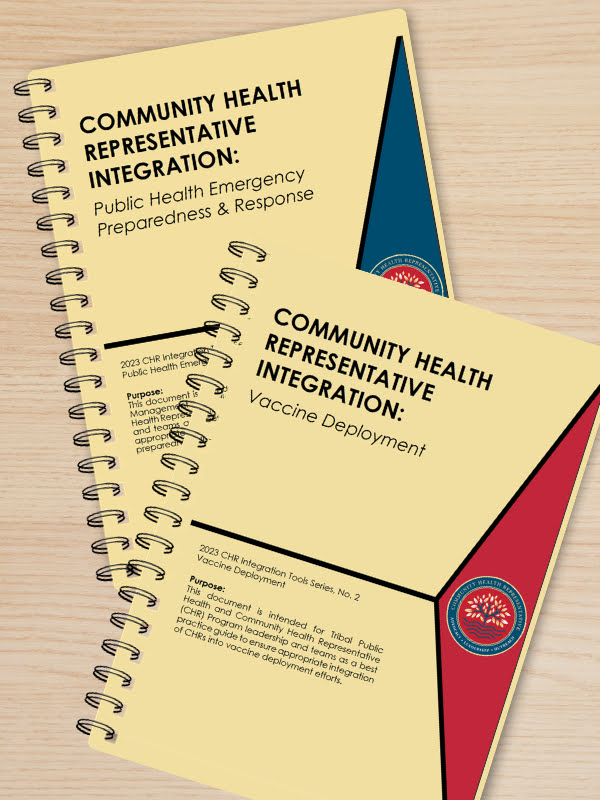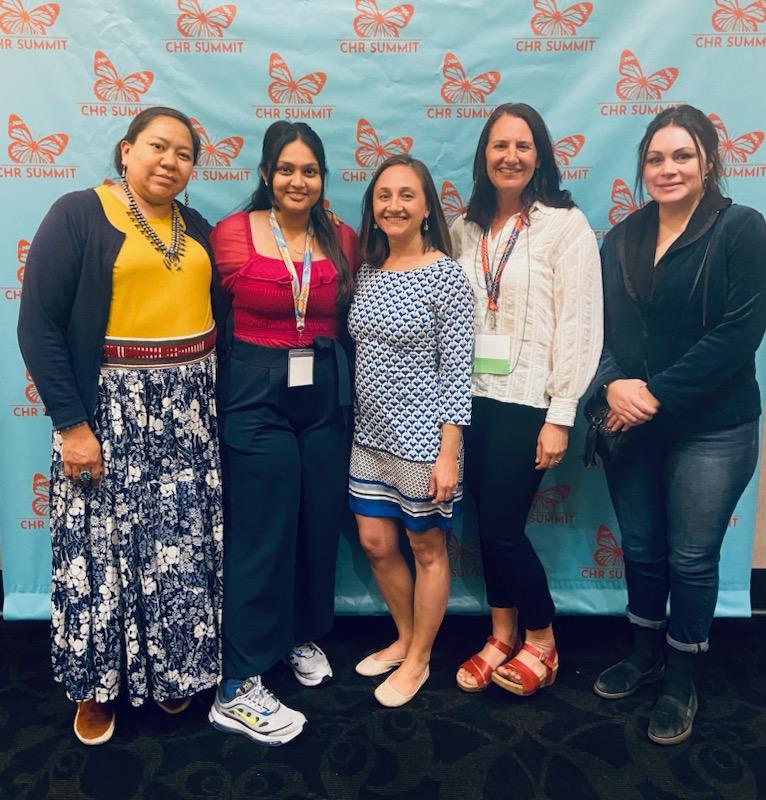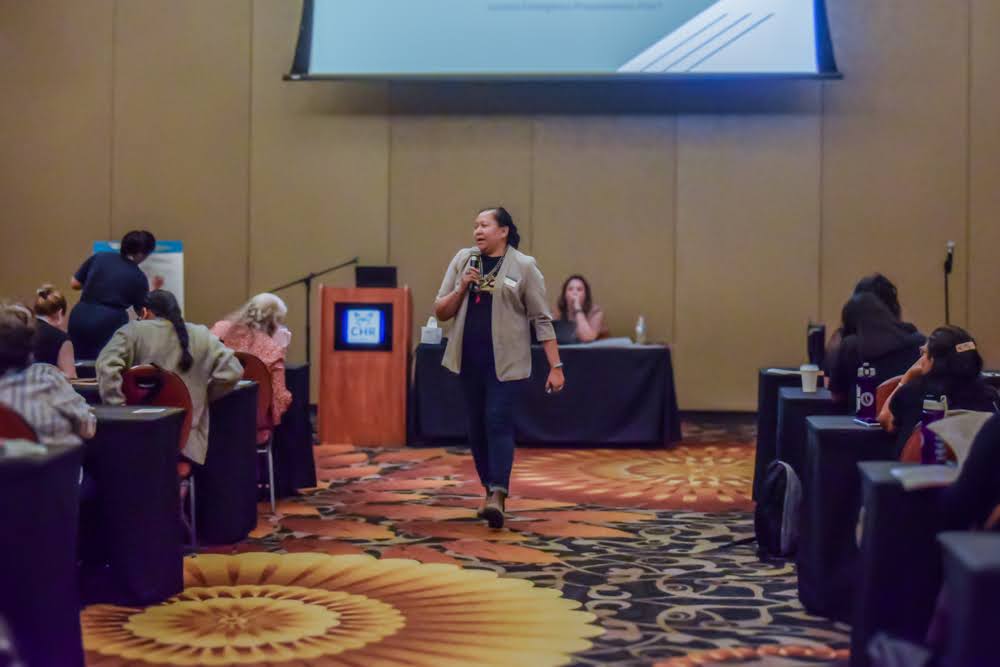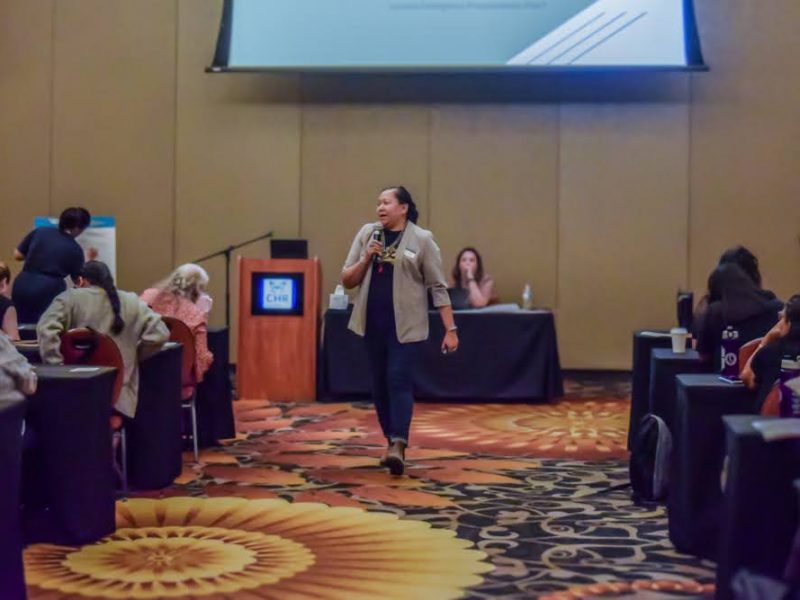New tools created to promote community health representative integration in emergency preparedness and vaccine deployment

Have you ever found yourself in a healthcare setting, feeling like your unique experiences, cultural background, or identity weren’t fully understood or taken into consideration by your provider?
You’re not alone. It is vital to be seen in the context of our cultures and identities when it comes to proper healthcare outcomes. That’s where community health representatives (CHRs) come in.
CHRs are effective, frontline tribally employed public health workers who are trusted members of their communities they serve due to shared ethnicity, language, and life experiences. The Indian Health Services (IHS) CHR program is the oldest federally funded community health worker workforce in the country. The CHR workforce in Arizona contributes to improved healthcare outcomes for 19 tribes across the state by providing system navigation and resource coordination, patient advocacy and social support, and culturally appropriate health education.
Guiding the way with best-practice tools

Louisa O’Meara, Janet Yellowhair, and Dr. Samantha Sabo DrPH of the Center for Health Equity Research (CHER) at Northern Arizona University (NAU) have developed two best-practice guides that lead the way for CHRs to assist in public health emergency preparedness and successful vaccine deployment. These guides are intended for Tribal Public Health and Community Health Representative Program leadership as a resource to ensure appropriate integration of CHRs into these efforts.
Released just in time for the 7th Annual Arizona Community Health Representative Summit, attendees were able to review these guides with their peers and leave with copies to share with leadership.

The tools were showcased in a breakout session led by Janet Yellowhair (NAU-CHER) and Marianne Bennett, Salt River Pima-Maricopa Indian Community Community Health Services Manager, and distributed to CHR and IHS leadership.
Over 200 community health representatives (CHRs), tribal leaders, tribal health advocates, Indian Health Services officials and other stakeholders gathered for the CHR Summit VII held November 7-9 at Casino Del Sol in Tucson, Arizona. Participants represented more than 20 various tribal organizations and CHR programs across Arizona, the Southwest and as far away as Washington, Minnesota, and South Dakota.
The tools and the Summit were made possible by a Centers for Disease Control and Prevention (CDC) grant, awarded to the Arizona Advisory Council on Indian Health Care (AACIHC), in partnership with seven Tribes and Northern Arizona University’s CHER. This partnership represents a three-year, $6 million initiative to expand the tribally employed community health worker workforce to address health equity.
These new tools are the first in a larger series of guides produced by CHER that focus on CHR integration in various areas of health and human service systems. All materials are developed in collaboration with the partnering tribal CHR programs including:
- Hualapai Tribe
- Salt River Pima-Maricopa Indian Community
- Colorado River Indian Tribes
- Hopi Tribe
- Gila River Health Care Corporation
- White Mountain Apache Tribe
- And Cocopah Indian Tribe
CHRs are critical to comprehensive emergency response, including vaccine deployment
“CHRs play a vital role in public health efforts as the link and trusted liaisons between official agencies and local populations,” said O’Meara, who is a lead investigator on the CHR project. “This role was underscored during the COVID-19 Pandemic, as CHRs were called on to provide essential support for community outreach and mass mobile testing and vaccination clinics, conduct home visits and welfare checks for the most vulnerable members of the community including homebound and elderly, and support clients with the navigation of health services.”
CHRs’ key roles include:
- Risk Communication by providing culturally competent messaging
- Identification and Support by identifying vulnerable populations and providing the help they need
- Health Promotion and Education by promoting effecting disease prevention and risk reduction
- Data Collection to gather data as trusted members of the community to guide equitable response
- Logistical Support to assist in the organization community-wide events and distribution of essential supplies
Keeping resources accessible and understandable
Within these resources, checklists are provided to ease implementation and practice of these emergency response and vaccine deployment guidelines. Sections of the checklist include roles and competencies, training and resources, health and safety, and infrastructure and support. These frameworks are supported with a list of yes/no questions that can help public health leaders and decision-makers appropriately and effectively involve CHRs in their efforts.
View the Community Health Workers resources.
